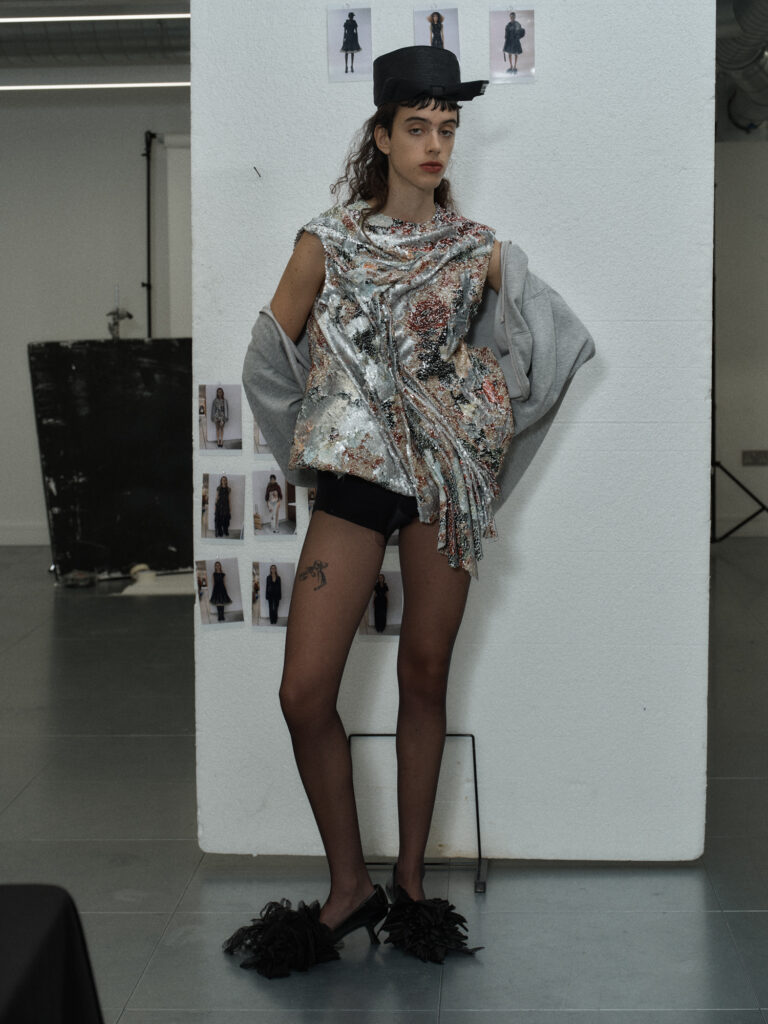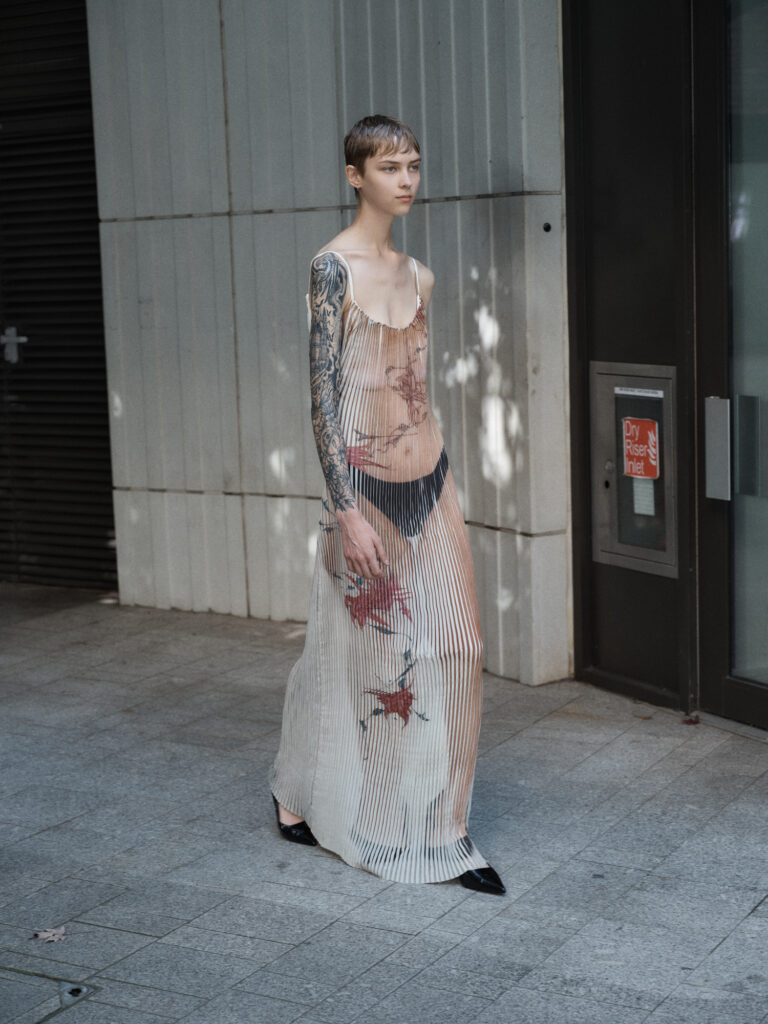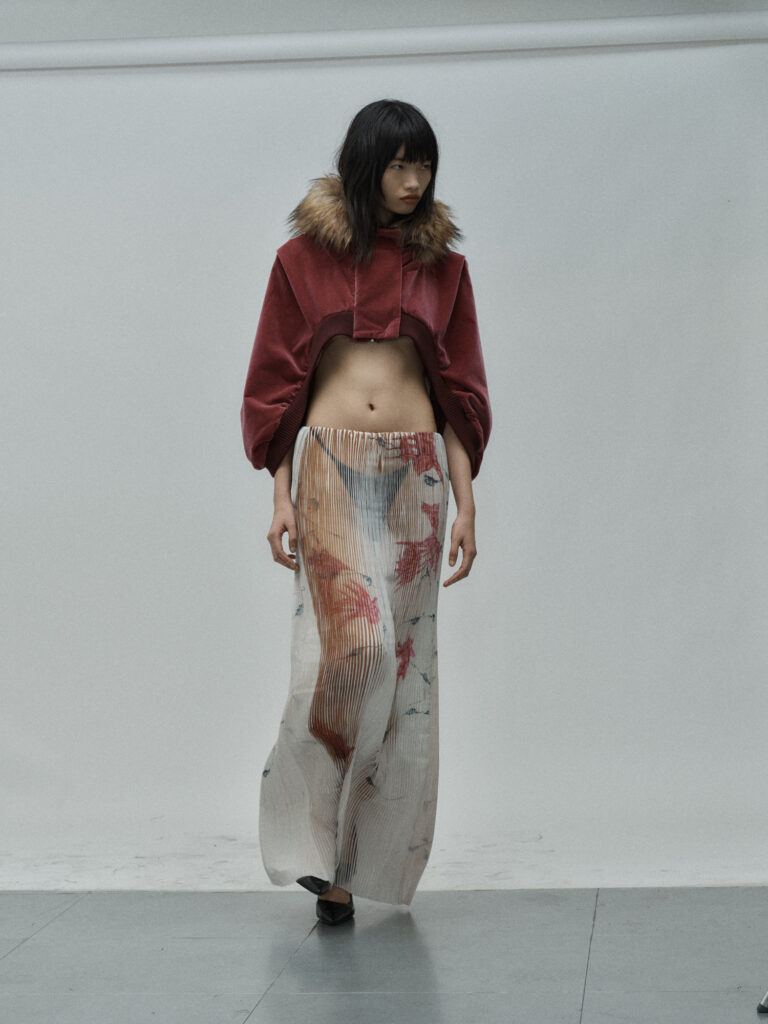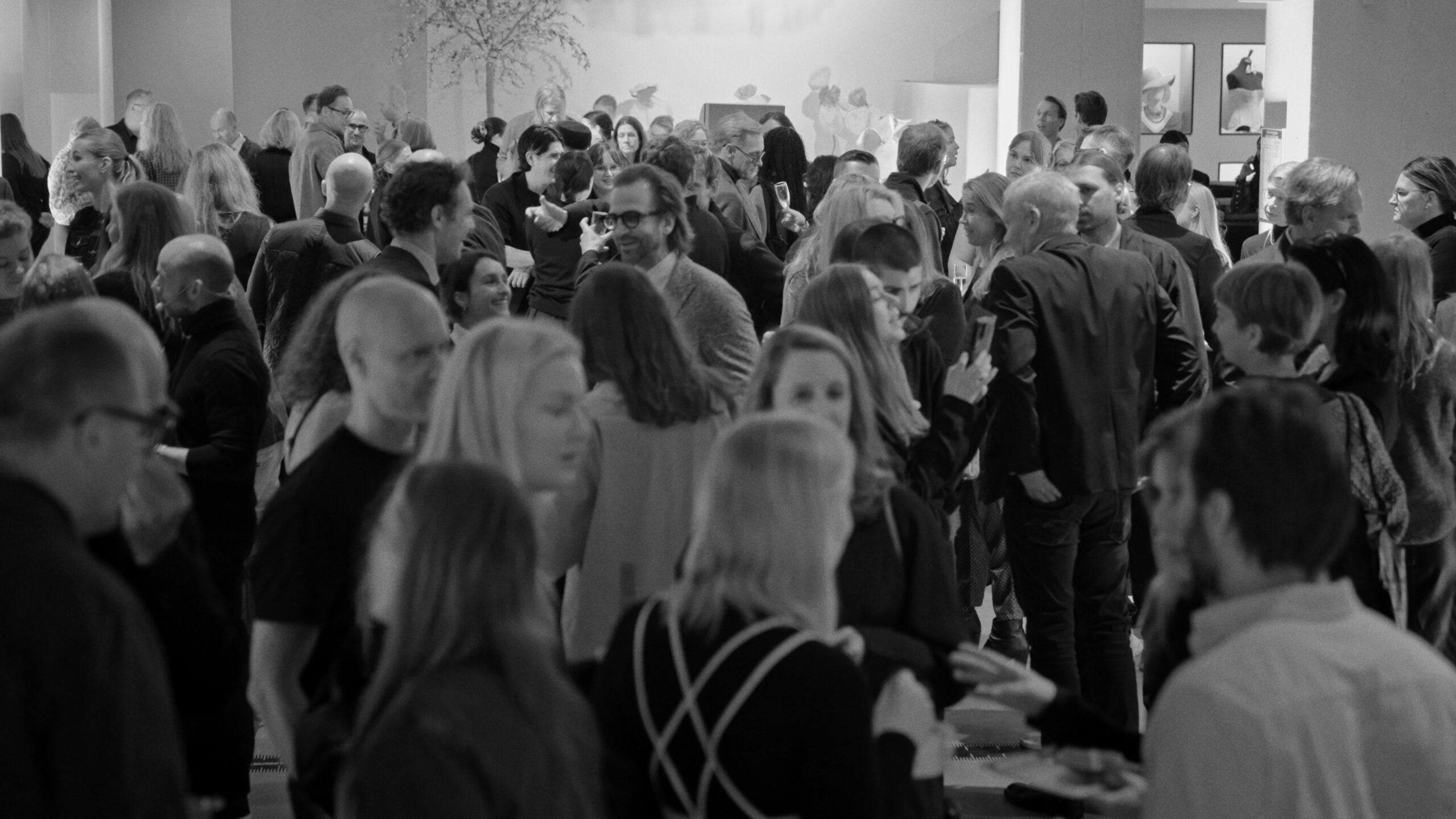Fresh off her win at the Fabric of Life award during Borås Textile Days, Swedish designer Petra Fagerström speaks about her collaboration with the Stockholm-based AI venture Substorm. Together, they are developing a protected AI environment for creatives. A research project aimed at solving one of the industry’s most pressing questions: how to use AI as a creative tool without risking the loss of ownership, authorship, or competitive advantage.
When Petra Fagerström tapped into AI to get to know it better, she realised that the existing models are heavily targeted towards fast fashion.
— There’s a lot of AI that can predict a whole season by looking at the shows, analysing them and then telling what is the next thing. It can also generate copies of that. So, you can basically just give a fast fashion company the next season in an instant, which obviously is a very scary development, she says.
— So, I was thinking, ’what would an AI that helped me be more creative look like?’ I tried to find existing ones but didn’t feel that there was any that really helped; they all seem to still try to generate new things all the time which is not what I need.
Fagerström then reached out to Sofi Elfving, the CEO of Stockholm-based AI company Substorm, just to have a chat.


— Our conversation turned into an idea of a project we wanted to do. We applied for funding from Vinnova (Sweden’s innovation agency, Ed’s note), and got it, for a one-year research project to try to develop a tool. This is more to push the tech and see what the problem is, identify what works and what doesn’t. It’s more research, not aimed to have a final commercial outcome yet, but maybe for the future.
— One key thing is IP protection. A big problem is that, as a designer, you don’t really want to use an existing AI model because if you put your own design into it, you don’t know what happens. Will someone else get a very similar recommendation through the same AI tool? If so, what happens to your IP? One key was to create something that you can put your design into, modify, work with, and try different fabrics, but is safe and a protected environment.
Over time, the initial idea has grown into tackling more administrative issues.
— We realised that it’s fun to do all these flashy, visual things, and changing fabrics, which can also help wasting less fabric if you can just visualise things first. However, where the shoe really doesn’t fit is how much time I spend doing admin, like line sheets, numbering things, product codes, and compositions. If you could have your body of work uploaded so that this AI could give you all the codes and line sheet information, so you don’t have to do as much admin, it might give you more creatively than the more visual things. This is the next thing we’re thinking about: the really boring stuff.
It’s exciting how you emphasise the fact that we’re scared of AI while you were also quite early on looking at the opportunities instead.
— Yes. I think that, because we fear it, if we avoid it, we let it develop in whatever way we don’t know. Whereas if we don’t fear it and try to get into it and affect it, we can direct what it does, and be part of how we want it to operate within our industry. Which makes it less scary.
You’re multi-awarded as a creative and just last week this year’s recipient of Designer of the Year at Fabric of Life award during the Borås Textile Days fashion event. The jury highlighted your work with sustainability and tech. What’s in the water in Sweden and the region, explaining how we can be such sustainability pioneers? Although you’re now based in London, of course.

— I do think that it could be quite a cultural thing. Even having lived in different parts of the world, I do feel like it’s a much bigger part of everyday life to be more sustainable in Sweden. It’s in everything from how we take care of our waste to turning lights off — it’s something quite ingrained in you.
— I also feel that maybe it has to do with that life in the Nordics is quite good, compared to many places, to a point where we might also have the ability to actually push for sustainability. Somewhere else, there might be other problems, such as the cost of living crisis, that you want to tackle first.
— I haven’t lived in Sweden in a while but I always have this feeling that things are almost a bit calmer, which allows you to actually focus more. My feeling is that there’s more opportunity here to be on the forefront of something.
From your perspective, based on your circularity work, how shall we scale that from fast fashion chains’ capsule collections to the new norm?
— It is really tricky and a big concern; how do you scale something that is inherently sustainable now also because it’s small and needs to be small to be sustainable? But you also want it to scale as much as possible because you want as many people as possible to be able to consume the way you propose.
— It’s also easy to be carried away when you have the kind of start that I have had, and start doing things quickly. The process of securing a supply chain that works and is sustainable and fair, and have the suppliers in place to be able to scale the way you envision it, takes a bit of time. One thing is to allow ourselves the time to not rush into a factory, producing more. Right now, we do made to order, through our own channels.
Which is very hard to scale.
— Yeah, I was gonna say that it’s a big problem when it comes to scaling. But I do think there is sort of a beauty in still pushing for making that a special thing. Maybe, there’s a different price point, and you can get more custom things that you value more. And maybe try to find the customer that actually wants to consume that way. It’s definitely tricky to scale, but that’s the challenge, right? And, we need a challenge for this to be fun anyways.
— I also feel that the fashion industry is changing, which shows by the fact that wholesale isn’t really working the way it has before. Maybe it’s like gonna lead to a shift also in how people consume. My goal is never to become Zara, the practice inherently can’t exist in that scale because it ethically does not make sense.


What are your next steps?
— I’m quite focused, still, on building the foundation for the business. I think our biggest challenge right now that we want to overcome is our material sourcing. If we need more, we can’t only rely on deadstock fabrics forever, so it’s about finding more suppliers that align with brand values and having a production chain established before we go for the next show. The goal would be to start showing during London Fashion Week, be a bit more visible. I’m still very, very small, so it’s also about building brand awareness.
And to remain a part of the Swedish Fashion Council’s incubator and showroom in Paris, the fashion capital — sorry London!
— Yes, exactly. Most people who show in London are also selling and do showrooms in Paris. It makes sense; that’s where everyone is. People say that London is dying. I don’t think so. I think there’s a lot of young energy in London still, and so many young brands that have more space there than they do in Paris. However, it’s also getting increasingly difficult to exist in London, as a person in general and as a business. Thankfully, I’m also gonna be part of Paul Smith Foundation through a residency, offering me a space, mentoring, and a lot of good support, says Fagerström.



